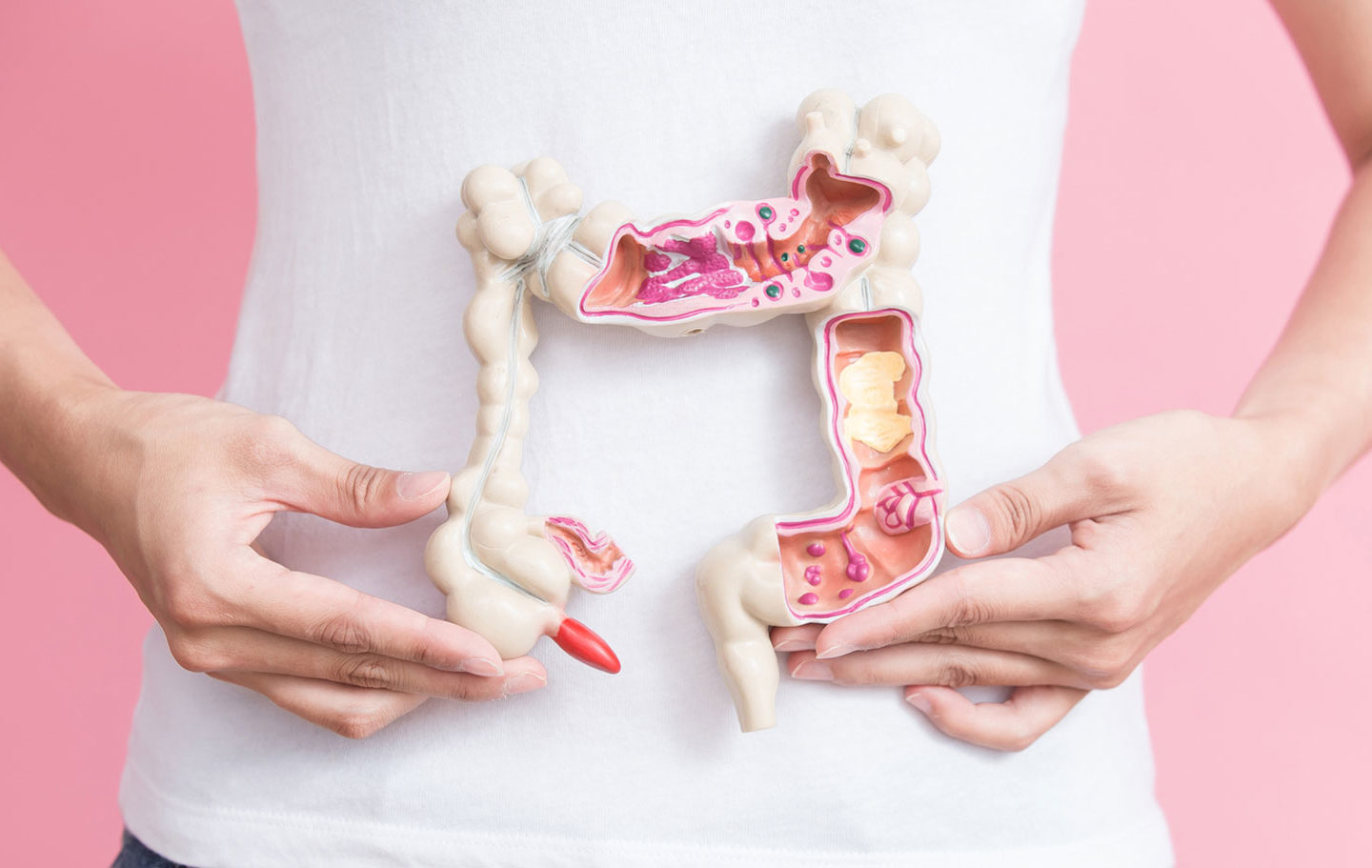Your intestine is home to a multitude of bacteria – in total, your intestinal microbiome (the technical term for your [...]

The most common symptoms of intestinal disease
If you have bowel disease symptoms, the question you may have is: Are the symptoms due to the intestine or do they have another cause? What complicates the answer is that there are intestinal diseases whose symptoms are not always clear. While some symptoms indicate a serious bowel disease, others can be caused by food or stress. Here you can find out when you should be sensitive and how to find out how your bowel is doing.
Flatulence: a classic bowel disease symptom
Flatulence is not only unpleasant, but sometimes even really painful. Your intestinal bacteria produce gas together with your food – as far as normal. However, if the gas production gets out of hand, the intestine is unpleasantly bloated. For flatulence there are different causes.
Often, fibrous foods or fatty foods are responsible. Beans, onions, sauerkraut or cabbage, for example, are known to cause flatulence. Especially if your intestine splits proteins, flatulence can occur. The reason: this produces hydrogen sulphide , which is also responsible for the unpleasant smell of some flatulence. Therefore it is quite possible that you get flatulence from eggs, dairy products, legumes or meat.
If flatulence always occurs, this may also indicate an unbalanced intestinal flora. If there are more bad than good intestinal bacteria, a number of intestinal complaints can occur. How to find out if your intestinal flora is balanced or not can be found in the last section.
If flatulence occurs constantly or in combination with nausea, diarrhea or stomach pain, it may be irritable bowel syndrome. This intestinal dysfunction is extremely stressful for those affected. Often the bowel disease symptoms worsen with stress. Anxiety, sorrow and nervousness also contribute to the syndrome.
Loss of appetite and dragging pain in the lower abdomen
If you suffer from loss of appetite and have pain between the ribcage and the navel, this may indicate inflammation of the appendix. Later, the pain migrates to the lower abdomen, which can be accompanied by vomiting and nausea as well as increased temperature. However, it is treacherous that this classical symptom sequence only occurs in about 50 percent of patients. To be on the safe side, consult a doctor to be sure.
Diarrhoea and vomiting
If diarrhoea and vomiting occur shortly after or together, it is likely to be stomach flu. Gastroenteritis, so the technical term, should not be confused with a normal flu, the influenza.
If you have caught viral gastroenteritis, your digestive tract will be affected by pathogens. The symptoms usually appear within a few hours of infection. Diarrhoea with vomiting is the main symptom, abdominal pain or abdominal cramps also occur frequently. Normally, viral gastroenteritis disappears by itself within a few days. It is important that you compensate for the loss of fluid. So drink even if you don’t feel like it.
slimy, watery, or bloody diarrhea
This symptom indicates a bowel disease. If watery or slimy diarrhea occurs together with cramping pain in the lower abdomen, severe flatulence or weight loss, this may indicate Crohn’s disease. This is a chronic inflammatory bowel disease that occurs as episodes. So it may well be that you do not notice any symptoms for a longer period of time. Morbus Crohn can affect the entire digestive tract. The intestinal disease is characterized by inflammations in the intestine, which particularly affect the intestinal mucosa.
Bloody and slimy diarrhoea accompanied by fever or cramping abdominal pain may indicate ulcerative colitis. This is also a chronic inflammatory bowel disease. Ulcerative colitis, unlike Crohn’s disease, only affects the large intestine. The disease usually starts in the rectum and then spreads to the colon. Ulcerative colitis also occurs in episodes that can be months apart.
It is important that your doctor makes a exact diagnosis. Neither of the two intestinal diseases can be cured – but there are ways and means to reduce the symptoms. It is important to prevent complications such as bowel obstruction or a bowel rupture. If this happens, it is a life-threatening emergency that must be treated in hospital.
Have your intestinal flora analyzed
You finally want to know what it looks like in your intestine and what about the balance of your intestinal flora? Would you like to know which “intestinal type” you are, how your immune strength is and what your calorie consumption looks like? The INTEST.pro intestinal test of BIOMES tells you all this. You will get an informative detailed report which tells you in which amounts which bacteria are present in your intestinal flora.
The results of the intestinal test will help you in these areas:
- Intestinal problems
- Weight problems
- Immune strength
- Fitness



